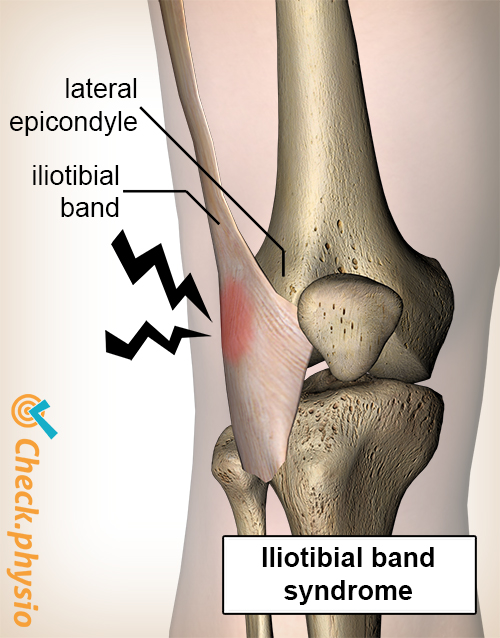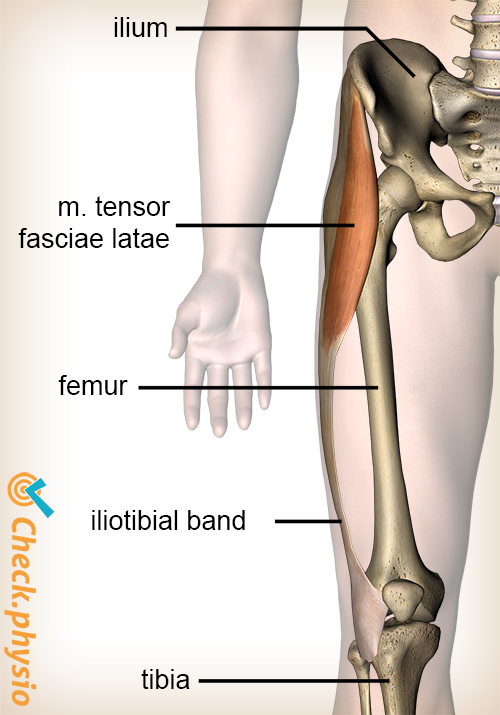- Conditions
- Iliotibial band syndrome
Iliotibial band syndrome Runner's knee
Introduction
Iliotibial band syndrome is a running injury that also occasionally occurs in mountaineers. The pain is located on the outside of the knee and is caused by friction between the iliotibial tendon and bone tissue of the knee joint.
In the literature, the iliotibial band syndrome is also referred to as 'runner's knee'. However, this name is confusing as this term is also frequently used for the patellofemoral pain syndrome.

Description of the condition
The iliotibial band is a strong band of connective tissue (fascia) located on the outer side of the thigh. It runs all the way from the pelvis to the side of the knee. When flexing and extending the knee (for example when running), the tendon moves over a bony prominence on the outside of the knee. This bony prominence is called the 'lateral epicondyle' of the femur (thigh bone).
Between the tendon and the bony prominence, there is a type of smooth fatty tissue that allows the structures to move over each other without too much friction. If friction does occur, this can cause irritation of the fatty tissue. Each time that the iliotibial tendon moves over the irritated fatty tissue, this causes pain symptoms on the outside of the knee. The irritation can penetrate into the bone tissue.
Cause and origin
The symptoms are usually caused by long distance running or mountaineering (particularly descents). There are a number of factors that can contribute to the development of iliotibial band syndrome:
- Incorrect running technique (for example, rotating the knee inwards when running).
- Bow legs.
- Shoes with too much support on the inside of the foot.
- Always running on the same side of a sloped road (this forces the leg on the outside into a bowed position).
- An extra pointy or outward protruding lateral epicondyle of the thigh.
Signs & symptoms
The symptoms develop gradually. The pain is felt on the outside of the knee, during or immediately after running (or mountaineering). There are no problems in rest.
Diagnosis
The diagnosis is made according to the physical examination and the patient's story. Ultrasound examination or an MRI scan should be considered only if the symptoms are not clear.
Treatment and recovery
During the first three weeks it is important to rest the tendon, the irritated fatty tissue and the bone. This can be achieved simply by not running or climbing mountains during this period.
In the meantime, it is recommended to start exercises to strengthen the muscles of the hip and knee. In addition, specific stretching exercises can make the iliotibial band less tense.
The causative factors - that probably caused the symptoms to occur - must be removed before the running training can be resumed gradually. For example, an adjustment of the running technique or purchasing other (better) shoes.
In occasional cases, one can consider surgical elongation of the iliotibial band. This reduces the tension on the tendon and thereby reduces the friction whilst running.
Exercises
There are several exercises you can do to reduce the symptoms caused by the iliotibial band friction syndrome. View the exercise programme here with exercises for the iliotibial band friction syndrome.
More info
You can check your symptoms using the online physiotherapy check or make an appointment with a physiotherapy practice in your area.
References
Nugteren, K. van & Winkel, D. (2008) Onderzoek en behandeling van de knie Houten: Bohn Stafleu van Loghum.

